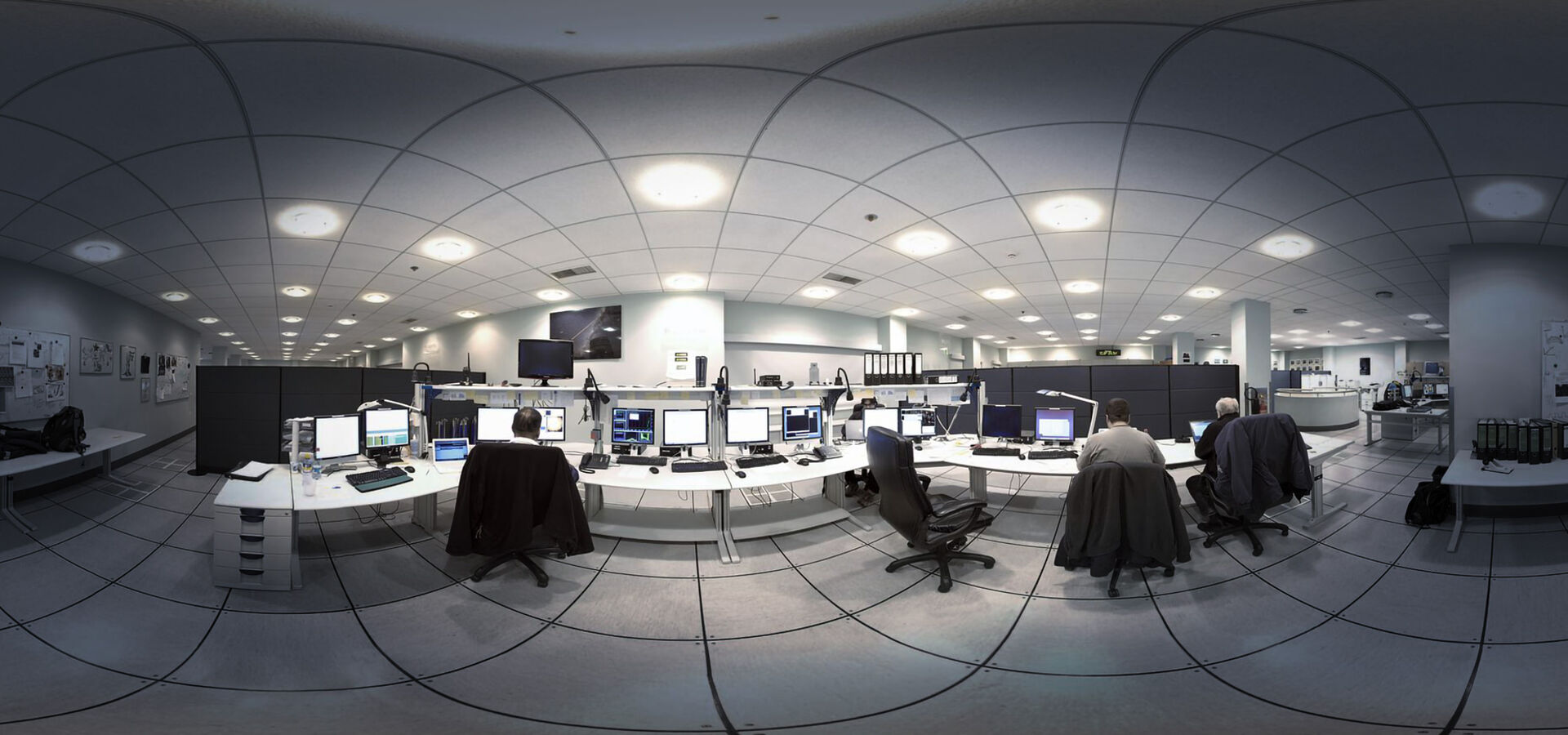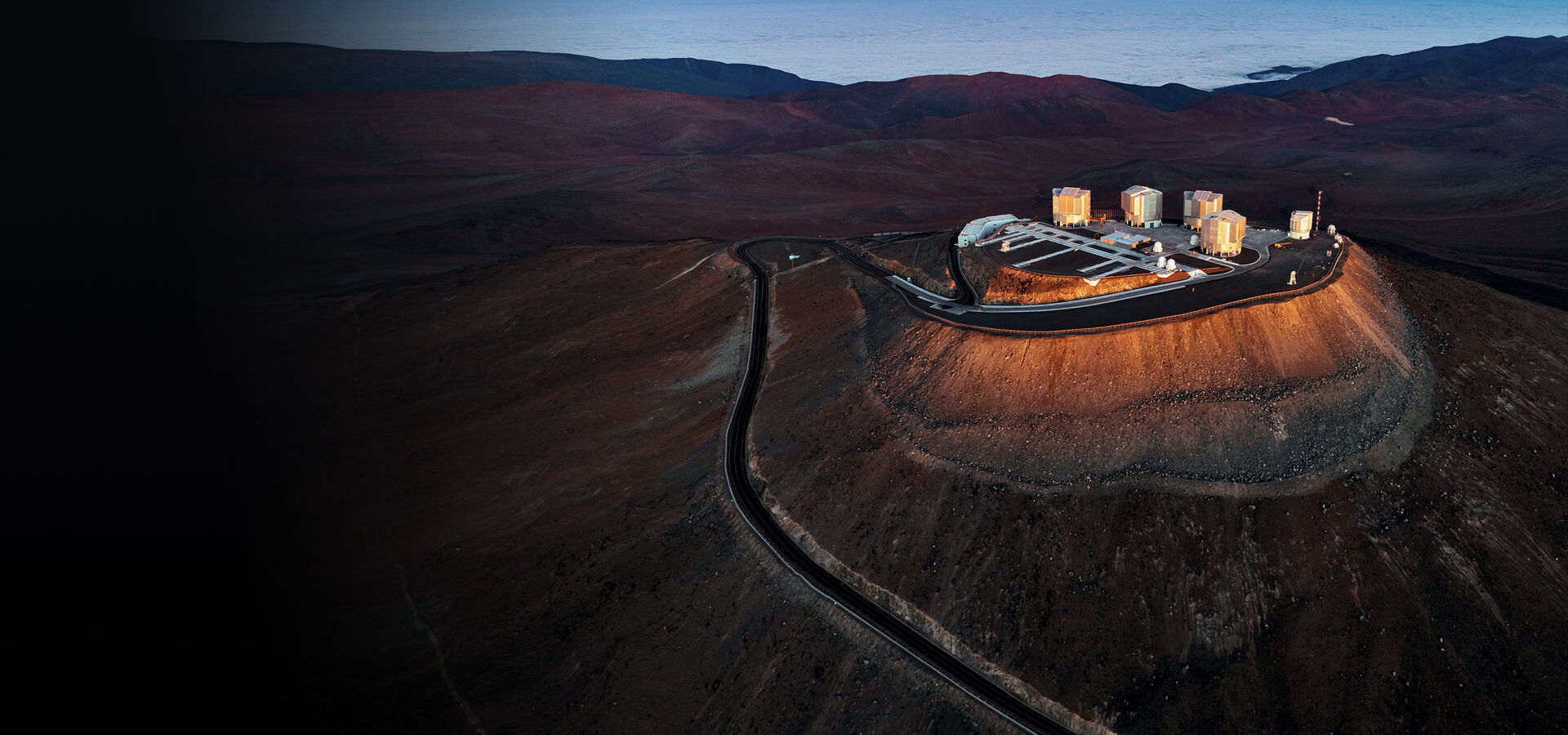
European
Southern
Observatory


The ELT will be part of ESO’s Paranal Observatory and will be operated from the same control room as other ESO telescopes such the Very Large Telescope.
The ELT will be part of ESO’s Paranal Observatory and will be operated from the same control room as other ESO telescopes such the Very Large Telescope.
Once the enormous telescope and instruments of ESO’s ELT are up and running, scientific observations of the night sky can commence. A challenge for the observatory is to efficiently schedule a huge number of planned (and often unplanned, but opportune) observations of different phenomena across the night sky, and across a range of different science areas, whilst ensuring the highest possible quality for the resulting scientific data. This process has already been fine-tuned by ESO for the Very Large Telescope (VLT), and will be advanced for the ELT.
The centre for the scientific observations will be 23km away from the ELT itself, in an operations building on Cerro Paranal, home of the VLT. The control room here will be a hub of activity. From here, observing teams will control the ELT and its instruments, in the company of observing teams for the VLT telescopes, and powered by a gigantic array of computers. The work here will include continuous monitoring and optimisation of the telescope and instruments, pointing of the telescope to lock on to celestial objects, and subsequent evaluation of the scientific data (e.g., images and spectra). Essential support will also be provided by ESO engineers, who perform regular maintenance of the telescope.
ELT operations will be fully integrated within ESO’s Paranal operations following an evolved version of the current end-to-end science operations model. This will be based on the experience collected operating the present implementation of the model, on the integration of new ELT-specific requirements, and by considering technological advancements. As is the case for current ESO facilities, observing time will be assigned through competitive access. A mix of different observing modes and programme types will be offered to optimise efficiency and science return. The raw data and data products resulting from the ELT observations will be stored in the ESO science archive and eventually become public.
Another important component of ESO’s ELT operations is the ELT Technical Facility at Paranal Observatory. This giant facility, built on a 6500-square-metre parcel of land, will serve as an assembly point for components of the ELT, as well as a place where they can be integrated and verified.
Among the components are the 798 segment mirrors of the enormous primary mirror, which will be 39 metres in diameter. Before first light, the ELT Technical Facility will be used for storage, integration and coating of the M1 segments, as well as for the coating of the secondary and tertiary mirrors. Once the ELT starts operating, the facility will be the main hub for the maintenance of ELT’s optical components, including the recoating of M1 segments. Each day, two segments will be stripped of their old coating, washed and recoated, before being taken up the mountain (Cerro Armazones, where the ELT is located) for reinstallation on ESO’s ELT.
We use cookies that are essential for accessing our websites and using our services. We also use cookies to analyse, measure and improve our websites’ performance, to enable content sharing via social media and to display media content hosted on third-party platforms.
The European Organisation for Astronomical Research in the Southern Hemisphere (ESO) is the pre-eminent intergovernmental science and technology organisation in astronomy. It carries out an ambitious programme focused on the design, construction and operation of powerful ground-based observing facilities for astronomy.
This Cookies Policy is intended to provide clarity by outlining the cookies used on the ESO public websites, their functions, the options you have for controlling them, and the ways you can contact us for additional details.
Cookies are small pieces of data stored on your device by websites you visit. They serve various purposes, such as remembering login credentials and preferences and enhance your browsing experience.
Essential cookies (always active): These cookies are strictly necessary for the proper functioning of our website. Without these cookies, the website cannot operate correctly, and certain services, such as logging in or accessing secure areas, may not be available; because they are essential for the website’s operation, they cannot be disabled.
Functional Cookies: These cookies enhance your browsing experience by enabling additional features and personalization, such as remembering your preferences and settings. While not strictly necessary for the website to function, they improve usability and convenience; these cookies are only placed if you provide your consent.
Analytics cookies: These cookies collect information about how visitors interact with our website, such as which pages are visited most often and how users navigate the site. This data helps us improve website performance, optimize content, and enhance the user experience; these cookies are only placed if you provide your consent. We use the following analytics cookies.
Matomo Cookies:
This website uses Matomo (formerly Piwik), an open source software which enables the statistical analysis of website visits. Matomo uses cookies (text files) which are saved on your computer and which allow us to analyze how you use our website. The website user information generated by the cookies will only be saved on the servers of our IT Department. We use this information to analyze www.eso.org visits and to prepare reports on website activities. These data will not be disclosed to third parties.
On behalf of ESO, Matomo will use this information for the purpose of evaluating your use of the website, compiling reports on website activity and providing other services relating to website activity and internet usage.
Matomo cookies settings:
Additional Third-party cookies on ESO websites: some of our pages display content from external providers, e.g. YouTube.
Such third-party services are outside of ESO control and may, at any time, change their terms of service, use of cookies, etc.
YouTube: Some videos on the ESO website are embedded from ESO’s official YouTube channel. We have enabled YouTube’s privacy-enhanced mode, meaning that no cookies are set unless the user actively clicks on the video to play it. Additionally, in this mode, YouTube does not store any personally identifiable cookie data for embedded video playbacks. For more details, please refer to YouTube’s embedding videos information page.
Cookies can also be classified based on the following elements.
Regarding the domain, there are:
As for their duration, cookies can be:
Cookie settings: You can modify your cookie choices for the ESO webpages at any time by clicking on the link Cookie settings at the bottom of any page.
In your browser: If you wish to delete cookies or instruct your browser to delete or block cookies by default, please visit the help pages of your browser:
Please be aware that if you delete or decline cookies, certain functionalities of our website may be not be available and your browsing experience may be affected.
You can set most browsers to prevent any cookies being placed on your device, but you may then have to manually adjust some preferences every time you visit a site/page. And some services and functionalities may not work properly at all (e.g. profile logging-in, shop check out).
The ESO Cookies Policy may be subject to future updates, which will be made available on this page.
For any queries related to cookies, please contact: pdprATesoDOTorg.
As ESO public webpages are managed by our Department of Communication, your questions will be dealt with the support of the said Department.